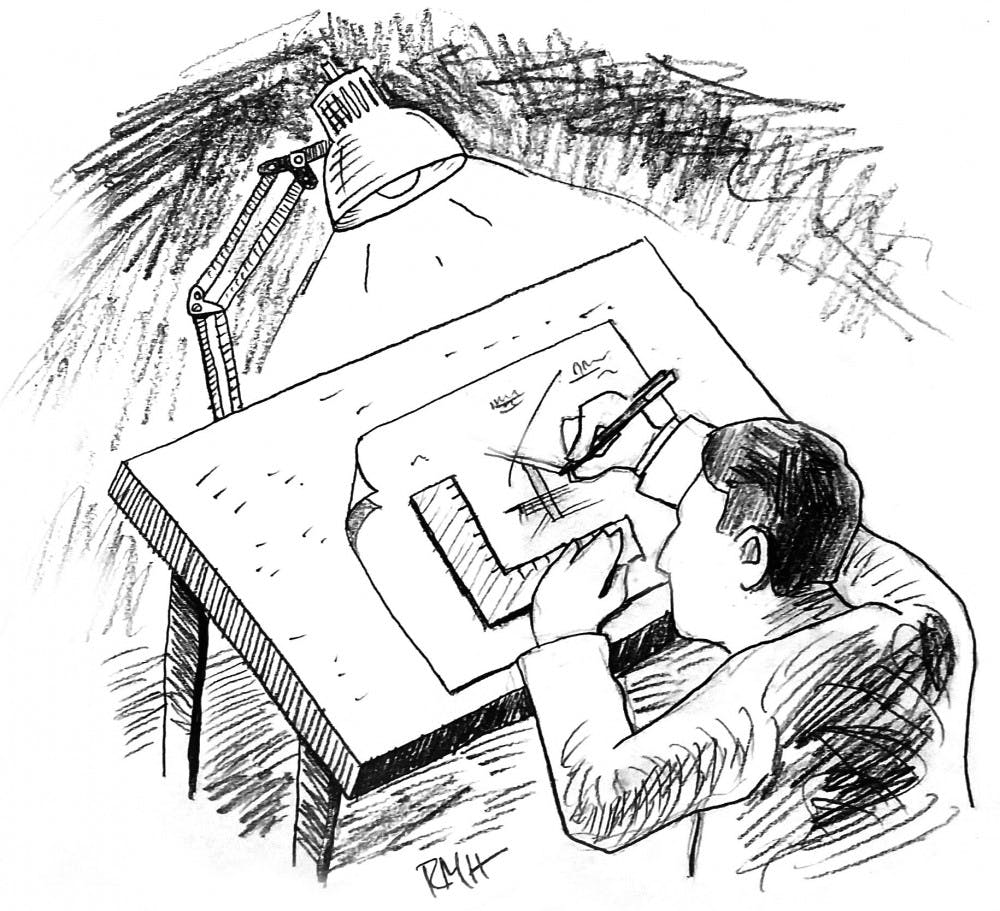For students still undecided on a concentration, there is now a new option to consider: architecture. Though an architectural studies concentration has always been available within the Department of History of Art and Architecture, a new interdisciplinary concentration, simply called architecture and focusing on architectural design, was recently developed, said Dietrich Neumann, professor of history of art and architecture.
With the April 7 deadline approaching, the new architecture concentration, to be offered in addition to architectural studies, is already available for current sophomores to declare, Neumann said.
Students who concentrate in architecture will also have the opportunity to seek “advanced standing,” which will allow them to enter a two-year master’s program at Rhode Island School of Design or other architecture schools upon graduation, Neumann said.
The concentration requires that students take 14 courses from a variety of disciplines such as engineering and design, environmental studies, urban politics and literature, he added. The department expects five to 10 students to apply for the concentration this year.
Justin Liang ’18 noted that the architecture concentration seems to center on “doing” architecture as opposed to looking at and critiquing structures.
The concentration was created in response to student demand and to prepare students who are considering enrolling in architecture school after graduation, said Sheila Bonde, chair of the Department of History of Art and Architecture.
The new concentration “is necessary because many of my peers have asked for it before,” said Isabela Muci ’16. “It’s more hands-on and prepares students better for architecture school.”
Still, cultural and social context are clearly instrumental to the concentration’s vision of an undergraduate education in architecture.
The concentration has “been planned with the explicit goal of connecting architectural training firmly with the humanities and providing a greater awareness of global, environmental, social and economic issues in the built environment,” according to a handout shared with students at a March 21 information session organized by the department.
Rather than focusing on “abstract formal exercises” involving form and shape — though this remains an important part of architecture — the department is attempting to orient students toward solving real-world problems, such as access to housing and space, Bonde said.
Another difference between the new concentration and the architectural studies concentration is that students undertaking the new concentration must take two design studio courses offered at RISD, as opposed to one introductory design course for the architectural studies track, Neumann said. This is “revolutionary,” as architecture is the first concentration to require two courses offered at RISD, he added.
While industrial architecture is relying more and more heavily on technology to represent buildings digitally, the new concentration aims to teach students the importance of sketching and creating models by hand, the handout stated.
“(Drawing by hand) makes you engage with the choices you are making because there aren’t any default orientations that the machine will give you,” Bonde said. She compared this to the field of archaeology, where “there’s something about spending the time drawing each stone that (makes it) a learning process.”
Faculty members have discussed developing the new concentration for years, but it was not until after a series of conversations among the department, RISD and the administration that plans were finally approved in early March, Neumann said. A number of students expressed enthusiasm for the change.
“I knew I wanted to study architecture, but I didn’t want to go to a full-on arts school,” said Benjamin Fox ’18. “Now that (the department) offers architecture design, this seems to be perfect for me.”





